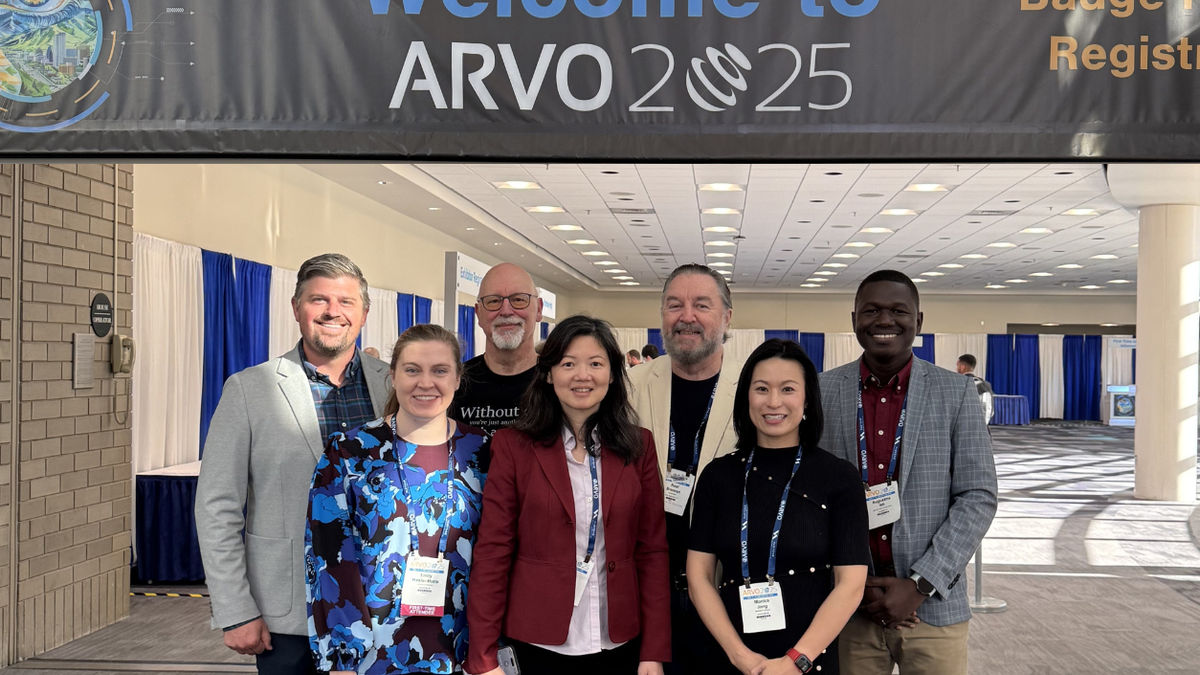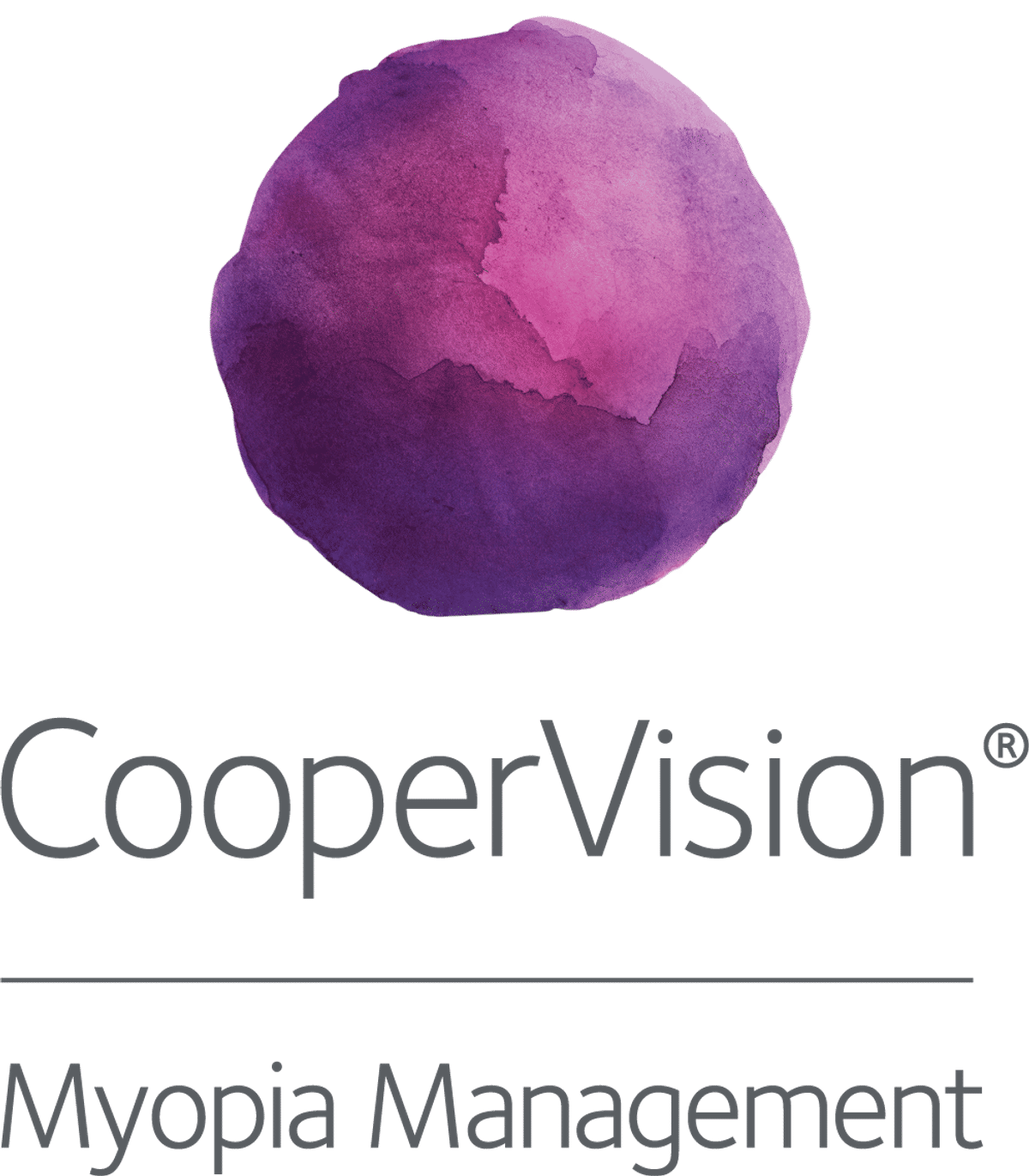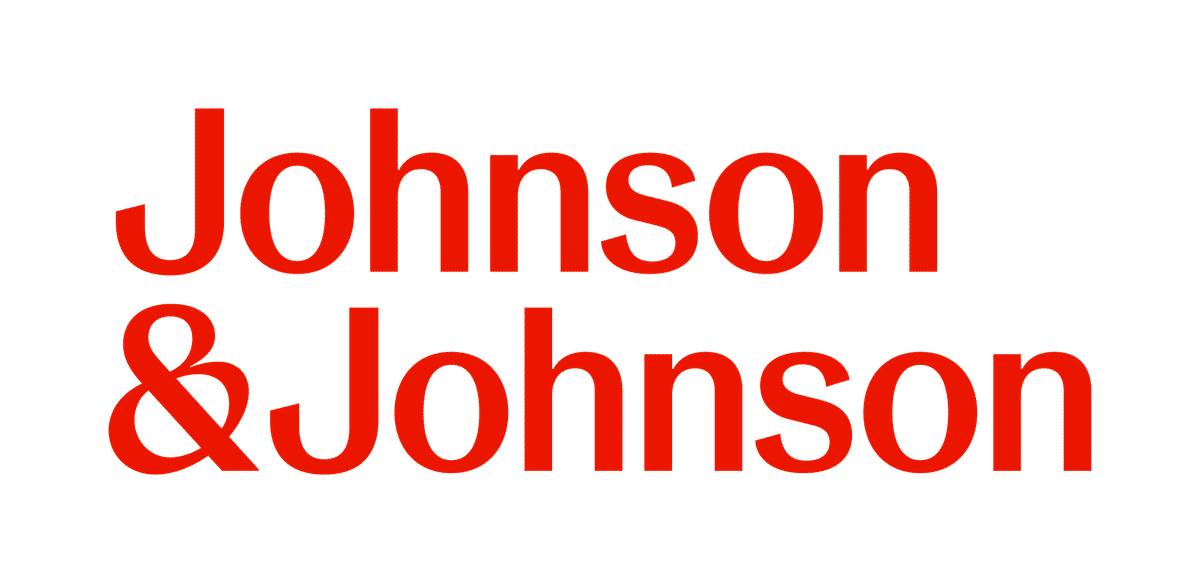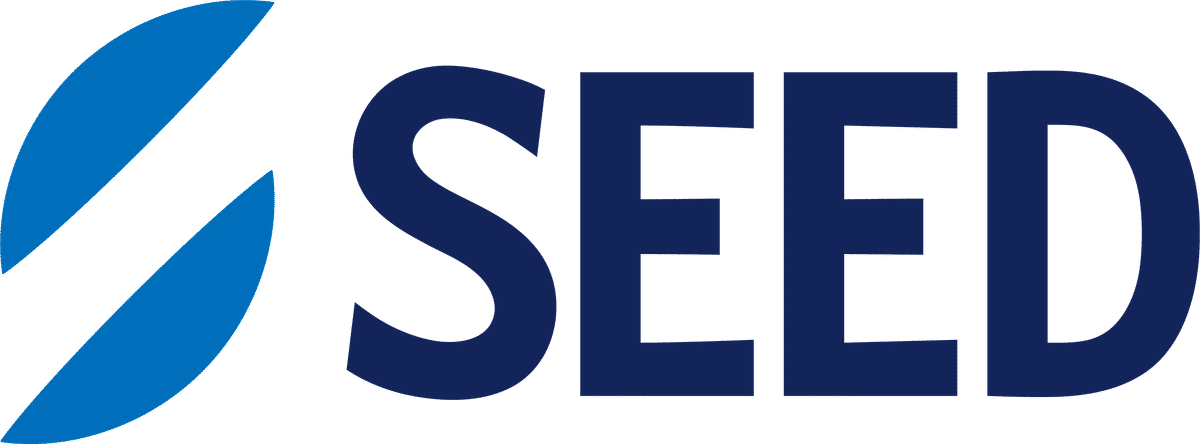Science
Highlights from Johnson & Johnson MedTech at ARVO 2025

Sponsored by
In this article:
Johnson & Johnson MedTech presented four abstracts at the Association for Research in Vision and Ophthalmology (ARVO) 2025 meeting was held in Salt Lake City, USA.
- First, How Does It Work?
- Real-world Safety and Performance of a Novel Soft Contact Lens for Myopia Management in Chinese Children
- What Percentage of Individuals Treated for Myopia Progression Exhibit Axial Elongation Greater Than the Mean of the Control Group?
- The Limitations of Percentile Growth Curves for Myopia
- Readability of Online Patient Education Materials for Myopia Management
- Key takeaways
The Association for Research in Vision and Ophthalmology (ARVO) 2025 meeting was held in Salt Lake City, USA from May 4-8 and hosted thousands of experts in optometry and ophthalmology to share the latest findings in ocular science. The RingBoost™ soft contact lenses are an innovative addition to the suite of available myopia management options and offer a novel approach to slowing myopia progression. Soft contact lenses are a valuable option for pediatric patients as they offer numerous benefits including improved self-perception and enhanced self-esteem in young wearers.
As the prevalence of myopia continues to rise globally,
First, How Does It Work?
The RingBoost™ soft contact lens is a novel optical design specifically engineered to control myopia progression while maintaining good visual performance. Unlike traditional dual-focus or concentric ring designs, RingBoost™ Technology uses non-coaxial ring focus zones that deliver +7 D plus power with a “boost” in the center, a +10 D coaxial zone. This approach allows the lens to incorporate higher-powered myopia control zones into the lens design while limiting the impact on vision performance.
To learn more about RingBoost™ Technology, read our article Understanding RingBoost technology in soft contact lenses.
Real-world Safety and Performance of a Novel Soft Contact Lens for Myopia Management in Chinese Children
Pictured is Xu Cheng.
Authors: Xu Cheng¹, Jie Xu¹, Alex Nixon¹, Noel A. Brennan¹, Weizhong Lan²˒³
- Johnson & Johnson Vision, Jacksonville, Florida, United States
- Aier Eye Hospital in the Hainan Boao Lecheng International Medical Tourism Pilot Zone, China
- Aier Academy of Ophthalmology, Central South University, China
Summary
A 12-month real-world study involving 70 Chinese children aged 7–12 years found that the enhanced efficacy (EE) RingBoost™ soft contact lens for myopia management was safe, well-tolerated, and effective. No serious adverse events occurred, and all participants who completed the 12-month follow-up visit met lens wear requirements with high compliance. Myopia progression at 12 months was substantially lower than expected in the treated children with a mean axial length increase of 0.09 mm and refractive progression of -0.24 D, significantly less than the expected progression of +0.39 mm and -0.80 D in untreated Asian children aged 10.3 years old (age-matched to the mean age of the study participants).
Clinical take-home message: The RingBoost™ soft contact lens offers strong safety, excellent visual performance, and meaningful slowing of myopia progression in real-world pediatric use over 12 months in Chinese children.
Abstract
Purpose: Safety and performance of a soft contact lens for myopia control (EE, Cheng et al. Ophthalmol Sci. 2022 Oct 18;3(1):100232
Methods: This is a single-site, prospective, single-arm, open-label, real-world evidence study with a minimum of 1-year study duration. Eligible participants were followed post lens fit at 1 week and 1, 3, 6, and 12 months for evaluating potential adverse events (AEs), vision performance, lens fit, and lens wear compliance. Further, myopia progression was evaluated every 6 months via measuring changes in spherical equivalent cycloplegic autorefraction (SECAR by Topcon KR-1) and axial length (AL by IOLMaster 700).
Results: A total of 70 participants aged 7–12 years with a mean (SD) baseline myopia of -2.21 (0.97) D were fitted with the EE lens, of which 64 completed the 12-month follow-up. No participants were discontinued due to unacceptable lens vision, comfort, fit, or AEs. No serious or significant AEs occurred to date. At 12 months, mean (SD) changes from baseline in AL and SECAR were 0.09 (0.18) mm and -0.24 (0.41) D, respectively. Monocular distance visual acuity (VA) with the EE lens was 0.00 (0.05) and -0.01 (0.06) logMAR at initial lens fitting and 12 months, respectively—neither was significantly different from baseline best-sphere corrected VA (-0.01 [0.05] logMAR). Binocular distance VA at 12 months was 0.00 logMAR or better in 95.3% of participants. The mean (SD) lens wear time reported at 12 months was 13.5 (1.8) hours/day and 6.7 (0.6) days/week. All 64 participants met or exceeded the lens wear time requirements.
Conclusions: The 12-month outcomes of the real-world study demonstrated excellent safety, vision, and fit performance of the EE lens. Minimal axial elongation and myopia progression were observed within the 12 months of treatment (compared to an expected 0.39 mm / 0.80 D progression in untreated, 10.3-year-old Asian children).4,5 Safety and performance of the EE lens in slowing myopia progression in this cohort of Chinese children will continue to be evaluated for another year.
What Percentage of Individuals Treated for Myopia Progression Exhibit Axial Elongation Greater Than the Mean of the Control Group?
Pictured are Alex Nixon and Xu Cheng.
Authors: Noel A. Brennan¹, Xu Cheng¹, Monica Jong¹, Alex Nixon¹, Mark A. Bullimore²
- Johnson & Johnson MedTech, New Brunswick, New Jersey, United States
- Optometry, University of Houston, Houston, Texas, United States
Summary
This analysis estimated the proportion of children treated for myopia progression who still exhibit axial elongation greater than the mean progression in an untreated control group. Using data from 32 treated cohorts and accounting for age-adjusted pooled variance, the model predicted that even with treatments demonstrating 0.10 mm, 0.15 mm, 0.20 mm, and 0.25 mm axial elongation efficacy over one year, 26%, 17%, 11%, and 7% of children respectively would exceed the control mean. This suggests that progression above the control average is likely due to the natural variability in progression rates among children.
Clinical take-home message: Even with effective myopia control treatments, a proportion of children may show more axial elongation than the average untreated child—highlighting the importance of setting realistic expectations and recognising the wide variability in individual progression rates. Importantly, this does not necessarily mean the treatment is not effective.
Abstract
Purpose: A reasonable goal of any myopia control intervention is that it reduces axial elongation to less than the average elongation in a control group. Here, we estimate the proportion of children undergoing treatments of varying efficacy for myopia control that demonstrate greater axial elongation than the mean value observed for age-matched controls.
Methods: To determine an appropriate age-adjustment to pooled variance data, three papers providing individual control and treatment group 1-year progression data by age were used. Data from relevant graphs were digitized as necessary. Prediction intervals for the treated groups across age were considered as a proportion of overall pooled variance. To estimate the proportion of subjects in treated groups whose axial elongation exceeded the mean elongation of the control group, studies of myopia control interventions with statistically adjusted 1-year efficacy values and measures of variance for progression in the treated group were selected from our databank of controlled clinical trials. Conversions to standard deviations were made as appropriate and these were age-adjusted. A normal distribution of progression and equal efficacy across the age range was assumed. An unweighted logit function was used to linearly model the data.
Results: To appropriately adjust for age, pooled standard deviations were reduced by 8.2%. From the databank, 32 cohorts of treated subjects satisfied our inclusion criteria. Standard deviations (median 0.17 mm, IQR 0.16–0.20) were remarkably consistent in treated groups after 1 year, despite widely varying progression. The model (r = 0.99) predicts that 26%, 17%, 11% and 7% of treated individuals exhibit greater elongation than the mean of the control group for treatments with 0.10, 0.15, 0.20 and 0.25 mm 1-year efficacy, respectively.
Conclusions: This analysis provides estimates for clinicians of the proportion of treated individuals that exhibit undesirable axial elongation for a given treatment efficacy. The likely source of greater elongation than the mean of the control group is the absolute nature of myopia control efficacy and the large variance in underlying myopia progression rates of children rather than unresponsiveness to treatment.
The Limitations of Percentile Growth Curves for Myopia
Pictured are Mark Bullimore and Monica Jong.
Authors: Mark A. Bullimore¹, Xu Cheng², Monica Jong², Alex Nixon², Noel A. Brennan²
- College of Optometry, University of Houston, Houston, Texas, United States
- Johnson & Johnson MedTech, Jacksonville, Florida, United States
Summary
Axial length centile growth curves developed in context of the rising prevalence of myopia have not yet been evaluated in detail with regards to how well they represent emmetropic and myopic eye growth. A literature review identified 6 published centile growth charts and compared them with modelled trajectories for emmetropic and myopic eyes using a representative set of baseline axial lengths. While centile curves reflected emmetropic growth at lower percentiles, they underestimated axial elongation in myopic eyes - even at higher percentiles.
Clinical take-home message: Axial length centile growth curves may significantly underestimate true progression in myopic children. Relying on these charts could lead to an underappreciation of how effective myopia control treatment truly is. Instead, clinicians should use validated models of myopic eye growth as a more accurate reference point for monitoring progression and evaluating treatment outcomes.
Abstract
Purpose: In 1952, Hirsch published a table of refractive error percentiles by sex and age for children. More recently, interest in the rising prevalence of myopia has prompted researchers to revisit centile curves and several axial length growth curves have been developed. Here, we assess whether axial length centile growth curves accurately represent emmetropic and myopic growth, and consider the suitability of their application for assessing the impact of myopia control therapy.
Methods: In order to identify published axial length centile growth curves, PubMed was searched using the following terms: (myopi* OR refract*) AND (percentile OR centile OR growth) AND axial AND (curve OR chart). For comparison, axial length values for a representative selection of baseline values (21 to 24 mm at 6 years) were calculated as a function of age and race using published myopic
Results: Six published percentile growth curves were identified: three for European children, two for Chinese children and one for Indian children. A representative set of percentile curves are shown in the Figure (for European boys redrawn from Truckenbrod et al.
Figure: Centile growth curves for European boys.
Conclusions: Centile growth curves underestimate the average rate of axial elongation in myopic children, probably due to conflation of myopes and emmetropes, even at higher percentiles. Consequently, centile growth curves will underestimate the benefits of myopia control treatment, potentially contributing to mismanagement. Treatment efficacy should be based on comparison with published models of myopic eye growth.
Readability of Online Patient Education Materials for Myopia Management
Pictured is Monica Jong.
Authors: Monica Jong¹˒², Michelle Waugh¹, Pinar Ozmizrak¹, Ian Flitcroft³˒⁴
- Johnson & Johnson Vision, Jacksonville, Florida, United States
- Optometry and Vision Science, University of New South Wales Medicine & Health, Sydney, NSW, Australia
- Technological University Dublin, Dublin, Ireland
- Children's University Hospital, University College Dublin, Dublin, Ireland
Summary
This cross-sectional study assessed the readability of freely available online patient education materials for myopia management treatments and products with regulatory approval. The top 10 Google search results were reviewed across five treatment categories and eight product names, totalling 120 websites. Readability was evaluated using five standard indices (FRES, FKGL, GFI, SMOG, CLI) and scored against the Journal of the American Medical Association (JAMA) benchmarks. None of the websites met the recommended sixth-grade reading level across all indices, and only 13 websites met at least one readability index, 10 being product-related. Most websites also failed to meet multiple JAMA benchmarks. Statistical analysis showed only weak associations between search ranking and readability or benchmark adherence. These findings highlight the poor readability of online myopia management content available to patients and families.
Clinical take-home message: Online patient education materials for myopia management may be written above the recommended reading level and may not meet all key quality indicators. To support informed decision-making, it's essential that resources are written in plain language and meet established standards for accessibility and credibility.
Abstract
Objectives: Patients are turning to the internet to access educational materials to help them make healthcare decisions, making readability an important factor. This cross-sectional study assessed readability of online patient education materials for myopia management treatments that have regulatory approval.
Methods: The top 10 Google search results from May 2024 for freely available online patient information on myopia management modalities and regulatory-approved products in Canada and Australia were analyzed for readability. The modalities included: orthokeratology, myopia control spectacle lenses, myopia control soft contact lenses, atropine, and repeated low-level red-light therapy. The products included MiyoSmart [by Hoya] (spectacles), Stellest® [by Essilor®] (spectacles), MyoCare® [by Zeiss] (spectacles), MiSight® 1 day [by CooperVision®] (soft contact lenses), ACUVUE® Abiliti® 1-Day [by Johnson & Johnson] (soft contact lenses), NaturalVue® (soft contact lenses), ACUVUE® Abiliti® Overnight [by Johnson & Johnson] (orthokeratology), and Eikance (atropine). These searches gave 120 results. Readability was assessed with Flesch Reading Ease Score (FRES), Flesch-Kincaid Grade Level (FKGL), Gunning Fog Index (GFI), Simple Measure of Gobbledygook Index (SMOG), and Coleman-Liau Index (CLI). Additionally, websites were scored on Journal of American Medical Association (JAMA) benchmark criteria. Statistical analysis was performed with two-tailed tests.
Results: Of 120 websites, none met the recommended sixth-grade reading level across all readability indices. There were 13 websites meeting at least one readability index, 10 being product-related. There were 7 websites satisfying all four JAMA benchmarks, while the majority met one. There was a weak positive relationship between product search rank and readability (SMOG p=0.016, GFI p=0.021) and a weak negative relationship between JAMA benchmarks and readability for both modality (CLI p=0.045) and product (CLI p=0.049).
Conclusions: Online information about myopia management is generally written above the recommended sixth-grade reading level and does not meet all JAMA benchmarks. Websites that appear as top search results do not necessarily have easier readability. The readability of online patient education materials may influence access to treatment and outcomes.
Key takeaways
The Johnson & Johnson MedTech research presented at ARVO 2025 highlights the growing sophistication of evidence in myopia management. From new clinical data on RingBoost™ lenses to critical analyses of treatment benchmarking and patient communication, these findings equip us with deeper insights to support effective, personalised care. Key messages include:
- RingBoost™ Soft Contact Lenses showed strong safety, excellent visual performance, and effective myopia control in a 12-month real-world study of Chinese children. It also offers good visual performance, with 95.3% achieving binocular visual acuity of 0.00 logMAR (20/20 or 6/6) or better.
- Modelling shows that some children may still progress more than average, even with effective treatment—highlighting the importance of setting expectations.
- Centile growth curves may underestimate axial elongation in myopic eyes; validated eye growth models offer a more accurate way to track progression and treatment outcomes.
Alongside these outcomes, effective clinician-to-patient communication remains essential: verifying understanding, addressing misconceptions, and reinforcing key messages supports informed decision-making and encourages long-term adherence. As the prevalence of myopia continues to grow, so does the opportunity to make a meaningful difference in children's lives through evidence-based treatment and effective patient engagement.
Meet the Authors:
About Jeanne Saw
Jeanne is a clinical optometrist based in Sydney, Australia. She has worked as a research assistant with leading vision scientists, and has a keen interest in myopia control and professional education.
As Manager, Professional Affairs and Partnerships, Jeanne works closely with Dr Kate Gifford in developing content and strategy across Myopia Profile's platforms, and in working with industry partners. Jeanne also writes for the CLINICAL domain of MyopiaProfile.com, and the My Kids Vision website, our public awareness platform.
This content is brought to you thanks to an educational grant from
References
- Dias L, Manny RE, Weissberg E, et al. Myopia, contact lens use and self-esteem. Ophthalmic Physiol Opt. Sep 2013;33(5):573-80. [link]
- Fricke TR, Naidoo KS, Sankaridurg P, et al. Global Prevalence of Myopia and High Myopia and Temporal Trends from 2000 through 2050. Ophthalmology. May 2016;123(5):1036-42. [link]
- Cheng X, Xu J, Brennan NA. Randomized Trial of Soft Contact Lenses with Novel Ring Focus for Controlling Myopia Progression. Ophthalmol Sci. Mar 2023;3(1):100232. [link]
- Brennan NA, Shamp W, Maynes E, et al. Influence of age and race on axial elongation in myopic children: A systematic review and meta-regression. Optom Vis Sci. Aug 2024;101(8):497-507. [link]
- Nixon AN, Shamp WS, Maynes EM, et al. Ratio of refractive error change to axial elongation in young myopes. Invest Ophthalmol Vis Sci. Aug 0002;63:7. [link]
- Yii FS. Emmetropic eye growth in East Asians and non-East Asians. Ophthalmic Physiol Opt. Nov 2023;43(6):1412-1418. [link]
- Truckenbrod C, Meigen C, Brandt M, et al. Longitudinal analysis of axial length growth in a German cohort of healthy children and adolescents. Ophthalmic Physiol Opt. May 2021;41(3):532-540. [link]
Enormous thanks to our visionary sponsors
Myopia Profile’s growth into a world leading platform has been made possible through the support of our visionary sponsors, who share our mission to improve children’s vision care worldwide. Click on their logos to learn about how these companies are innovating and developing resources with us to support you in managing your patients with myopia.












